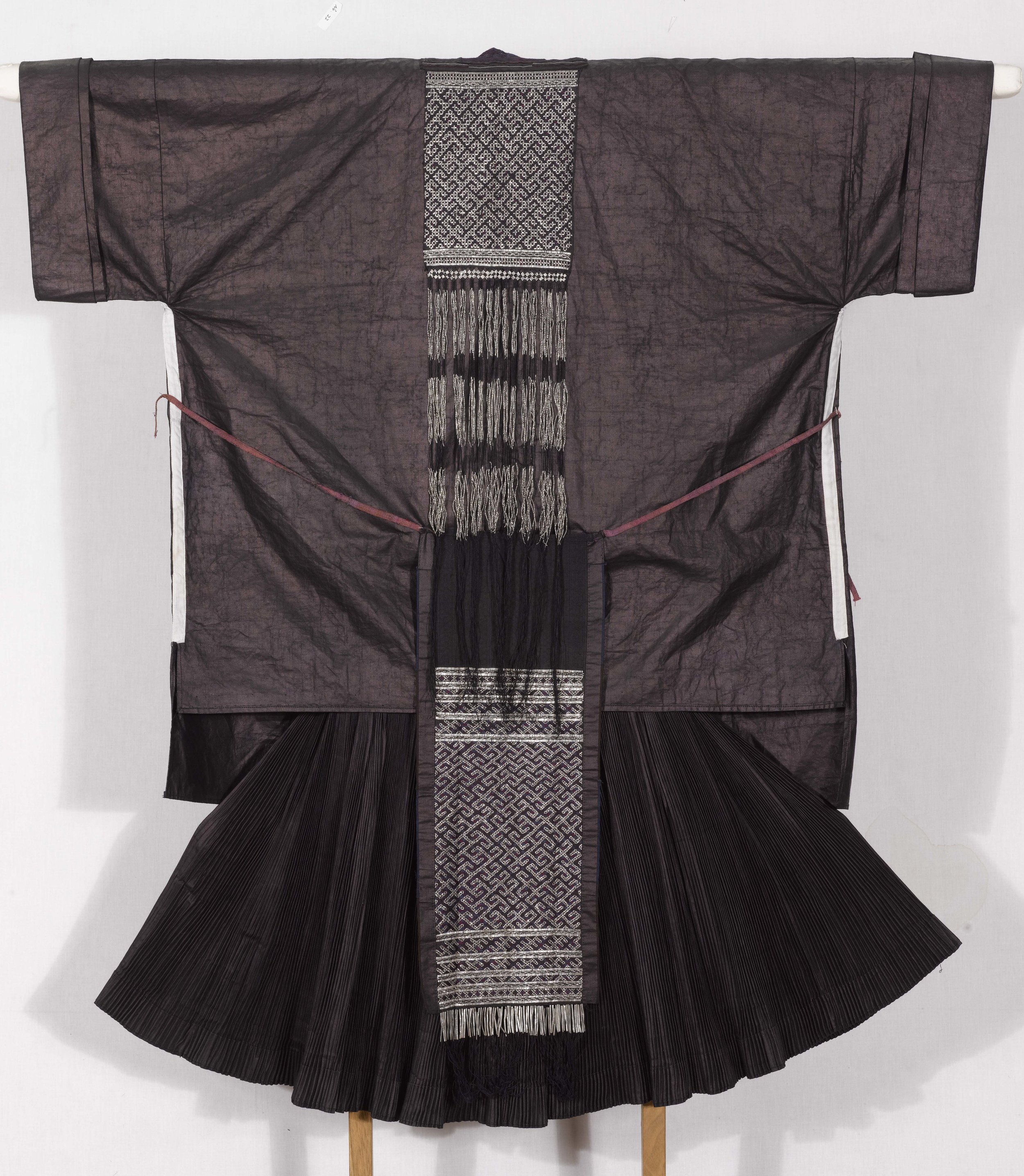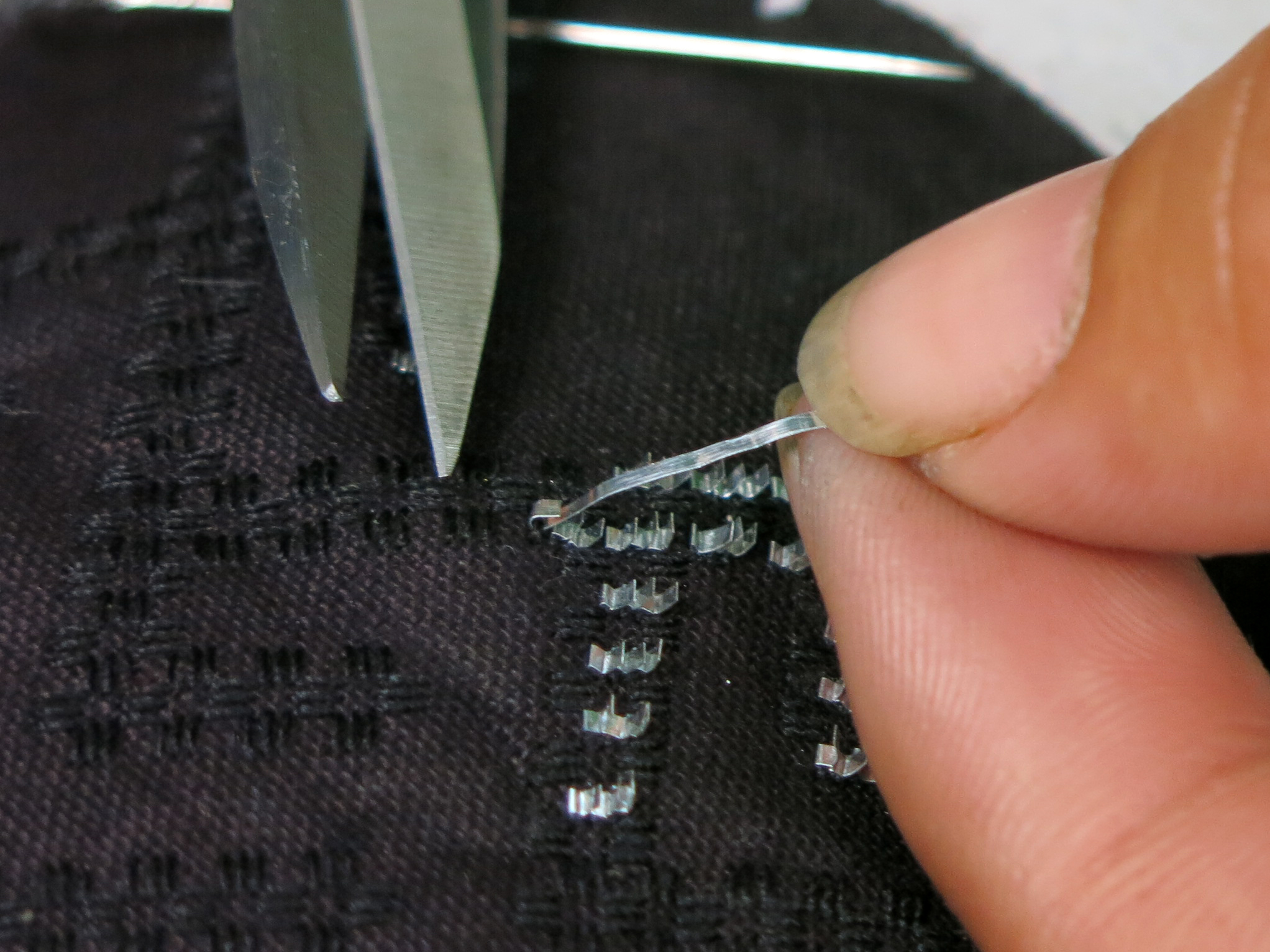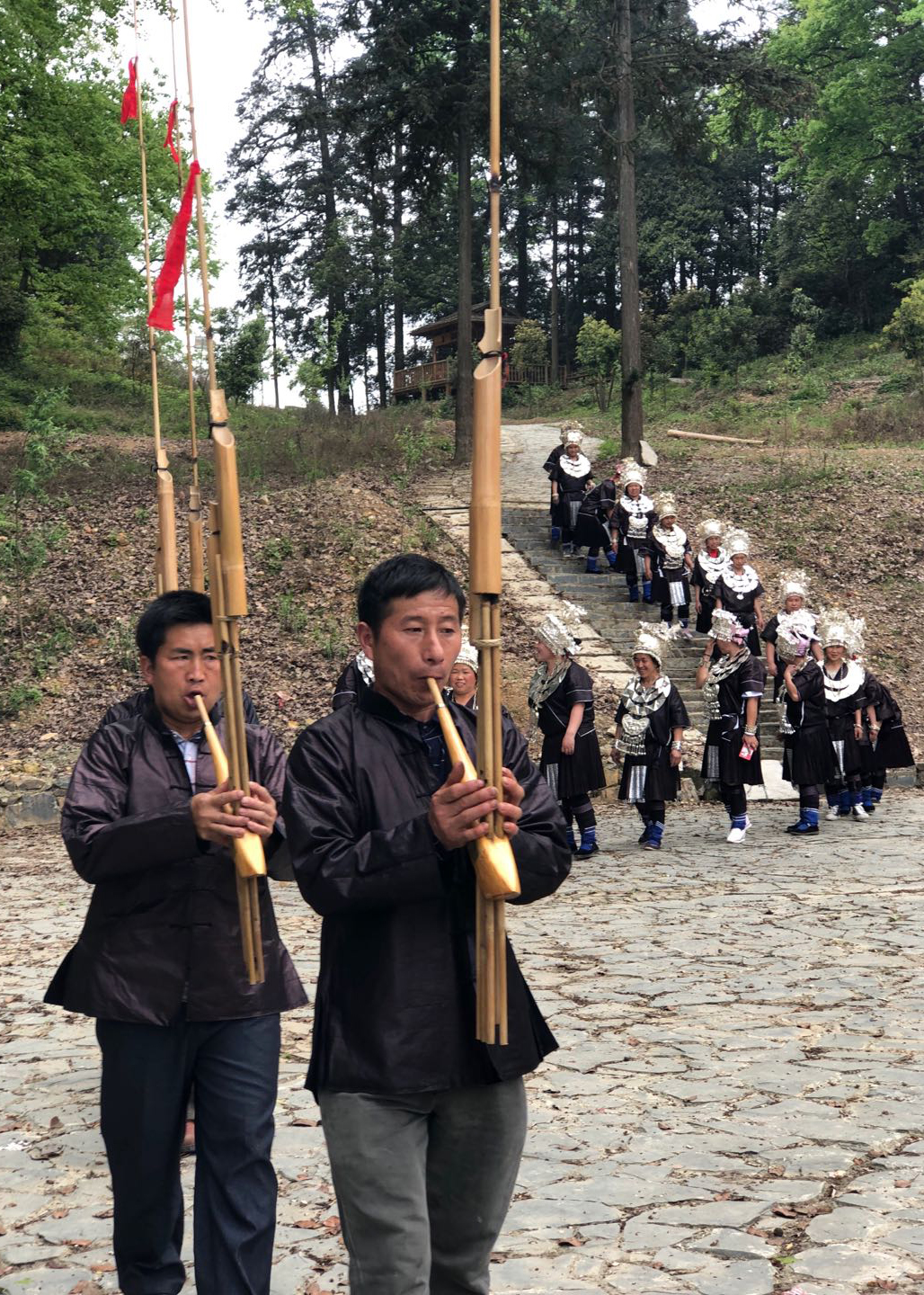Miao Tin Gimp Embroidery in Zhanliu, Guizhou, China
This article is written with field notes by Liu Yuho 刘育红.
Miao's tin gimp embroidery is an extremely unique type of needlework, ranking China's first batch of national intangible cultural heritage list. A visit to Zhanliu Village, Jianhe County in the southeast of Guizhou Province, allowed us to have an intimate understanding of the tin gimp embroidery process and the artisan community.
From Jianhe County, along the S311 Provincial Highway, it takes approximately three hours drive to reach the village. With a new road built last year leading to the village, it has improved access radically.
Located deep in the mountains of the Yungui Plateau, the scenic Zhanliu Village sits on the banks of the Qingshui River, about 770 meters above sea level. According to the Qing Jiang Zhi 《清江志》published in Qianlong years, the village has been recorded for more than 280 years. All 135 households in the village belong to the same Miao branch, where they call themselves "dāmēng" and their Han name is "Long" (龙), meaning "Dragon".
Traditional costumes
The Zhanliu Village women's blouse has a straight open collar with the front body longer than the back and folded sleeves cuffs. Belted at the waist, it is worn with the right front overlapping the left. The top is made of Miao's glossy indigo cloth, paired with knee-length plain pleated skirts (see our Miao pleated skirt story for one version of the making process). The collar is decorated with brocade and extremely detailed stitching, while the edge of the front collar and the back are adorned with geometric patterns of tin gimp embroidery and raindrop-like fringes.
Front view of women's outfit
Back view of women's outfit
Left side: Brocade; right side: Darning stitch
Edge of front collar with gimp tin embroidery
Decorated back of the women's top
At first glance, the two front and back aprons appear to be similar. The front aprons are only made of tin gimp embroidery. The back piece, however, based on woven cotton, is decorated with an extra layer of counted thread embroidery. This labour-intensive craftsmanship for the back apron, taking twice as long to finish, is all subtly interwoven in a deep colour palette.
Embroidery on front apron
Embroidery on back apron
Photo-journal: Making of Tin Gimp Embroidered Apron
This video shows the making process of the craft, with a detailed steps breakdown below.
1. Anchoring
Base cloth with completed anchor stitches
Anchor stitch with the back side up
Indigo-dyed cloth with anchor stitching
2. Tin sheet preparation
贵州考察—剑河县展留村打锡片工艺小视频 (Watch on Tencent)
3. Metal gimp decoration
Tin buckles are done in perpendicular directions.
After taking into consideration all the routine work in a rural family, a front apron takes about half a year to complete while a back apron takes up to a year to complete. It takes at least three years for a set of outfit to be done. In the face of this mass machine manufacturing age, the villagers' commitment to such tedious craftsmanship creates irreplaceable textile art.
Tin sheet stripping
Tin strip threading into pick line
Secures with shaped hook at the strip end
Flatten tin buckles
4. Traditional motif
Each woman has her own “old mother flower” (老母花), which is a collection of cloths documenting samples of stitches passed down through generations. In Zhanliu Village, women proudly show their “old mother flower”, including frameworks of anchoring stitches for tin gimp embroidery. It is fascinating to see their “home school” textbook in this beautiful form.
Economic growth is a priority for Zhanliu Village Chief Long Guangping. Until the new highway was constructed recently, accessibility of the village has been a big barrier for developing tourism. Long hopes to build on the village's hospitality services to create more occasions to wear their traditional costumes, and in turn, protect the tin gimp embroidery craft and promote heritage identity. View the original article on BIFT Museum of Ethnic Costumes' post.


























